What Back to the Future II Got Wrong About 2015
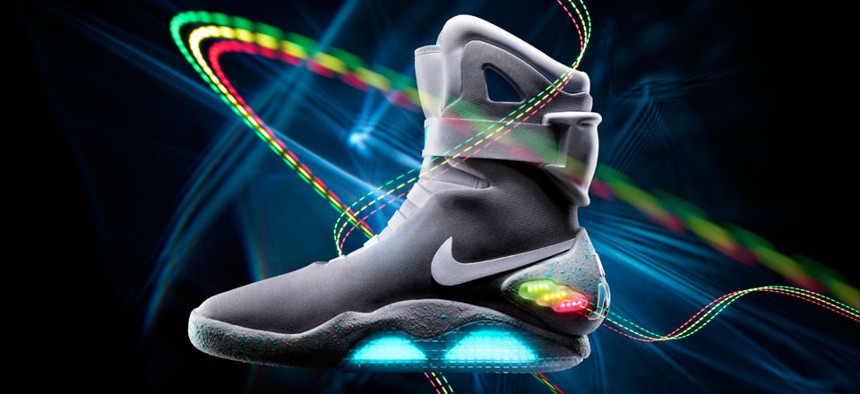
The 2011 Nike Mag is based on a glowing pair that appeared in the popular 1989 movie "Back to the Future II." Nike/AP
The two big things the classic trilogy missed: The rise of mobile and the Internet.
Enough with the flying cars and Hoverboards already. There's way more to the future than a few cool ways to zip from one place to the next. I know this because the future, finally, is upon us.
Yes, 2015 is the year Marty McFly visits in Back to the Future II . I've been counting down to this moment since the film came out in 1989. Although only a small fraction of the story is actually set in the year 2015—which was still 30 years away from the 1985 present of the story—it's chockablock with technological predictions about what life would be like today. Many of which (sort of) came true.
But the biggest twin advances filmmakers didn't see coming: mobile Internet technology and the on-demand, personalized culture that formed around it. As a result, the version of 2015 in Back to the Future II will forever seem stuck in the past.
There aren't any cell phones in the film. Instead, we see banks of phone booths. Here's one of the several pay phones in the film's version of 2015:
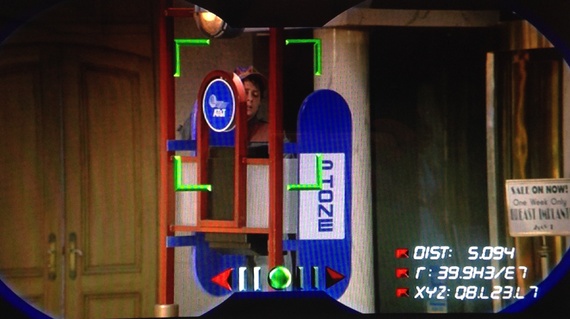
And there doesn't seem to be an Internet, at least not in the way we know it. Even a realistic service like real-time traffic reports are featured on an oversized digital display in a public square—rather than on the individual devices as we'd see today.
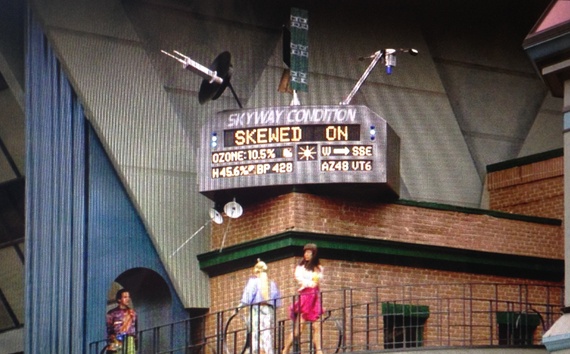
Similarly, although the McFly children are wearing a JVC glasses that are a pretty good proxy for Google Glass, the devices are hooked up to a family-shared telephone line ("Dad, it's for you," Marty's teen daughter complains when the phone rings and she checks her JVC glasses to see who's calling.) We also don't see the McFly kids wearing these things out in the world, which means they aren't really mobile devices. (Doc Brown, however, does wear his futuristic shades while he's out and about.)
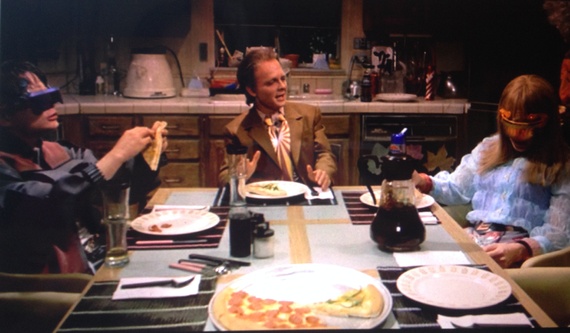
Fax technology exists in areas where email would be in the real 2015. Instead of regular old mailboxes, there are fax boxes that promise service in .05 seconds.
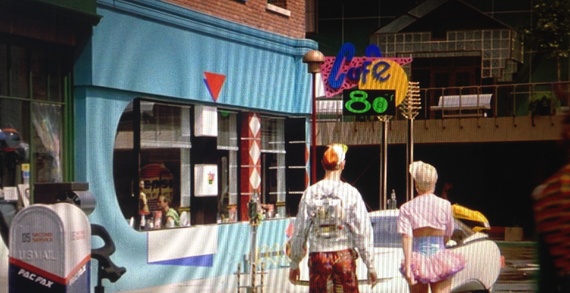
And though filmmakers smartly predicted video conference calls, business communication is delivered—physically printed out, dot matrix style—to a network of in-home fax machines that are more like intercoms than inboxes.
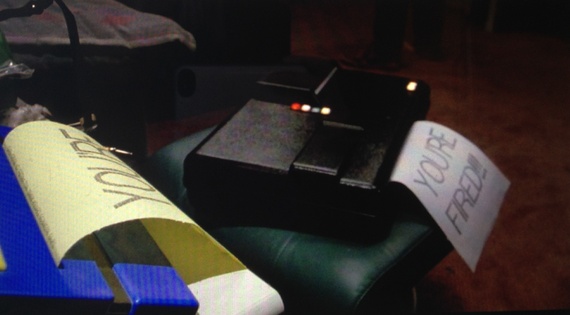
Credit to the imagination of those who came up with this version of 2015: There is still plenty in the film that resembles actual reality as we know it today. There's the smart watch that Doc Brown uses to check the weather, the reference to hands-free video games, the flatscreen television in the McFly home—all of which exist (and would rely on wifi) today. It's notable that the 2015 of Back to the Future features facial-recognition technology that looks the way it actually does today:
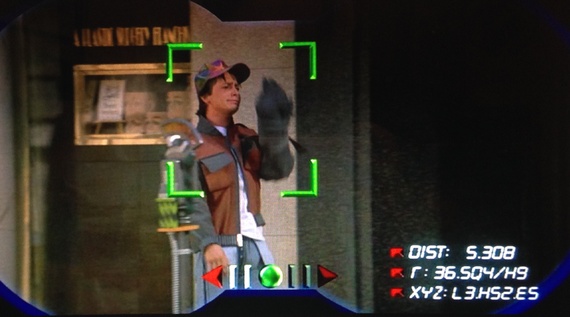
And that news organizations deploy drones to the scene of breaking news. USA Today 's news drone promises to be "always there first:"
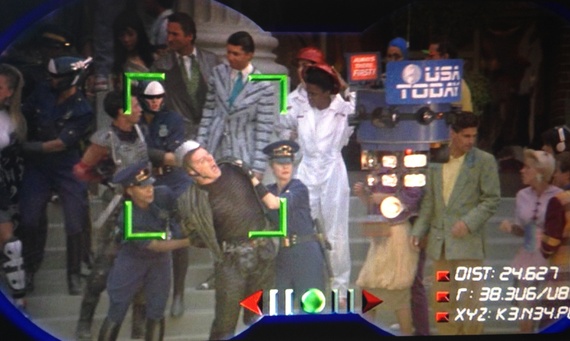
In the film, print newspapers cover stories about the increasingly blurry line between man and technology. Check out the headline about the pitcher "suspended for bionic arm use:"
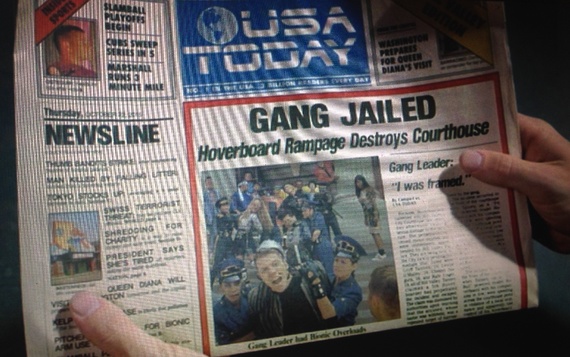
Bad-guy Griff Tannen is in a gang called the Bionic Overlords—and Griff himself, according to Doc Brown, has had bionic implants . ("Be careful around that Griff character. He's got a few short circuits in his bionic implants.")
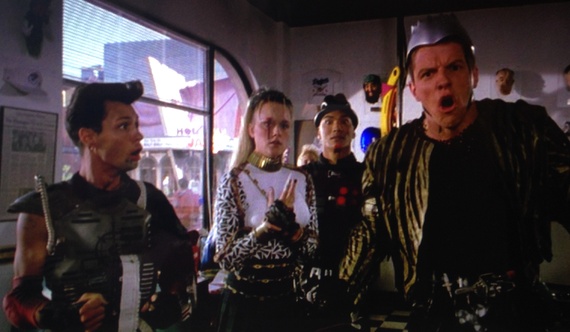
Some other details look familiar. There's a giant—perhaps genetically modified—apple on the shelf at the Cafe '80s:
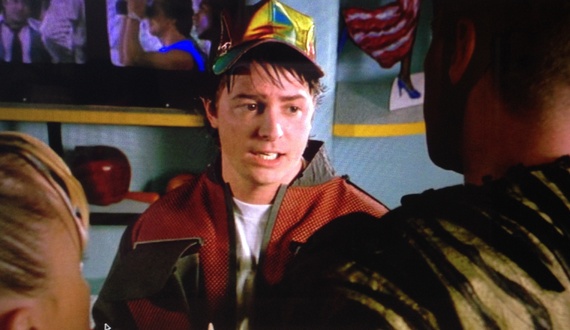
Both the taxi driver and the man soliciting donations for the clock tower carry devices to accept digital payment:
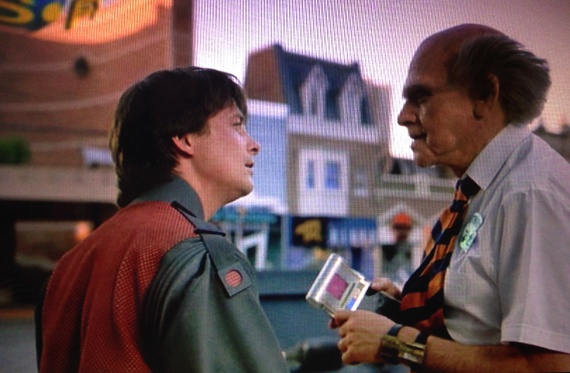
The Cafe '80s has automated waiters, which have been around at least experimentally for a few years. Also familiar in actual 2015 are fingerprint scans for door locks and power laces. Nike has had the patent for light-up shoes with an "automatic fastening system" for years.
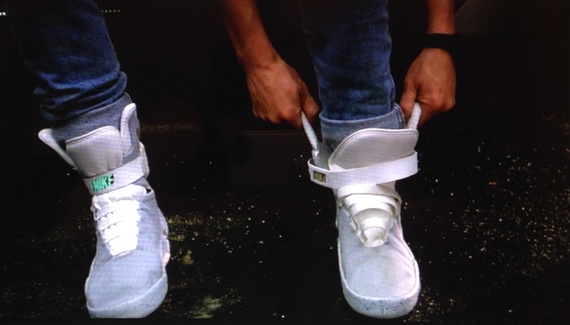
Watching Back to the Future II today becomes, in some ways, more about the past than it is about the future. The objects in the antique store window are actually dated now, and don't look out of place anymore, whereas they were contemporary when the film was released ("We have a quaint little piece from the 1980s," the woman in the store tells Marty. "It's called a Dustbuster.")

Looking back at an old movie's depictions of the future, people tend to fixate on what filmmakers got right and wrong. But examining how the real world advanced in this time is far more revealing. So we can't cook a pizza in 20 seconds with the (still fictional) Black & Decker hydrator. Hoverboards still haven't replaced skateboards. But life in the actual future is extraordinary. People carry tiny computers in their back pockets. Anyone can publish to a global audience from just about anywhere with the press of a button. Scientists can 3D print working body parts . Humans are able to share and access vast knowledge stores—troves of data, literature, and art—without leaving their homes. Cars may not fly but they can drive themselves . Considering what we can do with today's technology, the 2015 of Back to the Future II seems downright old-school.
It's telling, too, that people remain fixated on Hoverboards and flying cars. They're cool, of course, but they also represent prototypical 20th-century futurism . Today, we expect far more from what lies ahead. The changes will be profound. We've lived through an information revolution since Back to the Future II came out. Thirty years from now, people anticipate the rise of artificial intelligence, fully overlapping physical and digital worlds, travel to Mars, drones everywhere, and quantum computers with processing speeds faster than anything imaginable today. We're already living in a futuristic world that far surpasses the technological promises made back in 1989. Then again, the future doesn't really arrive until the moment Marty McFly went there: 4:29 p.m. on Wednesday, Oct. 21, 2015.
NEXT STORY: The future of FedRAMP





